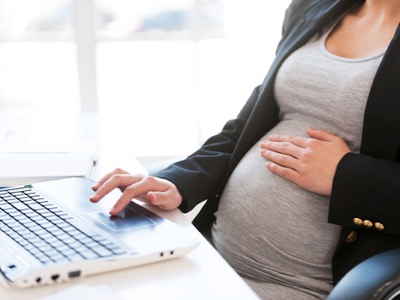Article by Hatti Suvari, Consumer Advocate and host of podcast ‘Get Legally Speaking‘

Having a baby can be one of the most exciting times of our lives, as well as the most challenging, so are our laws up to speed with modern life, in understanding the challenges that parents can be faced with during early days of parenthood?
Recent changes to our UK Employment Laws in relation to Maternity Rights, took effect from 5 April 2020 and they have been welcomed. Employment Law state that all pregnant employees have the right to take up to 52 weeks’ maternity leave, regardless of their length of service. You may also qualify for up to 39 weeks’ statutory maternity pay, or maternity allowance, if you do not qualify for statutory maternity pay, and you may also have the right to return to work during, or at the end of, ordinary maternity leave, to the same job on the same terms and conditions as if you had not been absent.
Pregnant employees have the right to time off to attend ante-natal appointments. Employers are under particular health and safety obligations in respect of pregnant employees and those who have recently given birth or who are breastfeeding.
In a snapshot, key points to consider are:
- All pregnant employees are entitled to 26 weeks’ ordinary maternity leave (also referred to as ‘OML’), and 26 weeks’ additional maternity leave (also referred to as ‘AML’), regardless of the length of your service.
- An employee is prohibited from working in the two weeks (four weeks if you work in a factory) immediately following the birth of a child.
- The employment contract continues as normal during maternity leave, with the exception of pay.
- Employees may qualify for up to 39 weeks’ statutory maternity pay or maternity allowance. Employers may also provide a period of enhanced maternity pay.
- From 5 April 2021 the statutory maternity pay rate was increased to £151.97 per week, (see the table below for historic rates*).
- Employees may agree to do up to 10 days’ work – known as ‘Keeping in touch’ days (also known as ‘KIT’) – during the maternity leave period without losing statutory maternity pay (also known as ‘SMP’) or triggering the end of maternity leave.
- After additional maternity leave, an employee is entitled to return to either the same job or, if this is not reasonably practicable, to another suitable job, on terms and conditions that are no less favourable to her than those that applied previously.
- Pregnant employees and those who are on maternity leave have significant employment protections. They are entitled not to be subjected to a detriment or to be dismissed because they are pregnant or because they have taken, or plan to take, maternity leave.
- Pregnancy and maternity are also protected characteristics under the Equality Act 2010, and treating someone unfavourably because of pregnancy or maternity is discrimination.
- Women may be eligible to convert some of their maternity leave into shared parental leave, that can be taken either by the woman or her partner, on a more flexible basis than has been the case.
| Payments | From 7 April 2019 | From 5 April 2020 | From 4 April 2021 |
| Statutory shared parental pay (ShPP)
Statutory rate or 90% of employee’s weekly earnings if this is lower. |
£148.68 | £151.20 | £151.97 |
| Statutory maternity pay (SMP)
First six weeks – 90% of employee’s average weekly earnings. Remaining weeks at the statutory rate or 90% of employee’s weekly earnings if this is lower. |
£148.68 | £151.20 | £151.97 |
| Statutory adoption pay (SAP)
First six weeks – 90% of employee’s average weekly earnings. Remaining weeks at the statutory rate or 90% of employee’s weekly earnings if this is lower. |
£148.68 | £151.20 | £151.97 |
| Statutory paternity pay (SPP)
Statutory rate or 90% of employee’s weekly earnings if this is lower. |
£148.68 | £151.20 | £151.97 |
| Statutory parental bereavement pay (SPBP) | N/A | £151.20 | £151.97 |
| Lower earnings limit (per week) | £118 | £120 | £120 |
*These rates are reviewed and updated annually each April.
Statutory shared maternity leave was introduced in April 2015, it has also been a much-welcomed introduction in to our laws, and it gives us new parents options. Many of us are not aware of statutory shared maternity leave, and in short it means that eligible parents can take up to 50 weeks as Shared Parental Leave (SPL), and up to 37 weeks of Shared Parental Pay (ShPP). You can take SPL at a different time from your partner/or the other parent, or at the same time. For example, a woman can be on maternity leave and her partner can be on SPL at the same time.
 About the author
About the author
Hatti Suvari is host of the UK’s leading law podcast, Get Legally Speaking. She is a law expert and consumer advocate who’s focus is to help the British population become more legally savvy. Commonly, law is perceived to be stuffy, complicated and inaccessible to the everyday person, something which Hatti is striving to change so they can understand how the law serves them.
WeAreTheCity covers the latest female centric news stories from around the world, focusing on women in business, careers and current affairs. You can find all the latest gender news here.
Don’t forget, you can also follow us via our social media channels for the latest up-to-date gender news. Click to follow us on Twitter, Facebook, Instagram, and YouTube.







